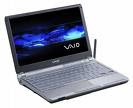 how can i monitor my laptop temperature CRT - Cathode Ray Tube, big glass bulb used in the large bulky monitors similar to TVs.
how can i monitor my laptop temperature CRT - Cathode Ray Tube, big glass bulb used in the large bulky monitors similar to TVs.LCD - Liquid Crystal Display.
TFT - Thin Film Transistor, a type of LCD technology where every pixel is connected to a transistor.
Pixel - Abbreviation of picture element. They are individual dots (elements) which constitute the image created on the LCD monitor.
Viewable Area - The diagonal measurement of a CRT screen from where the glass becomes visible from behind the bezel.
Colours - How many colours the monitor can reproduce, which can be up to 16.7million. Some displays require dithering to display such an array of colours, and can normally reproduce 252,000 colours.
Dithering - Dithering is the attempt by a computer program to approximate a colour from a mixture of other colours when the required colour is not available in how can i monitor my laptop temperature. Dithering also occurs when a monitor attempts to display images specified with more colours than it is equipped to handle laptop temperature.
Response Time - How quick the monitor reacts to a keystroke or CD-ROM. Very pertinent for graphical use, such as game playing. The lower the time the better e.g. 20ms is better than 40ms. There is a rising (r) and falling (f) time, how can i monitor my laptop temperature this gives the overall figure.
Footprint - used to describe the amount of space on a desktop a monitor covers.
Dot Pitch - A measurement of distance between the centres of two same colour phosphor dots on the screen. The closer the dots, the smaller the dot pitch, and the sharper the image. For example 0.264mm is better than 0.297mm.
Resolution - The size of the image displayed in number of dots (pixels) which makes up the width and the height of the image e.g. 1024 X 768.
Brightness/Luminance Cd/m2 - Cd is an abbreviation for candela. A candela is a unit of measurement of the intensity of light. An ordinary wax candle "laptop temperature" generates one candela.
NIT - Candelas per square metre can also be called NIT: The term for brightness / luminous (surface) intensity of a light source.
Contrast Ratio - The degree of difference between light and dark extremes of colour on the screen. Contrast is a method of measuring a dynamic range. The higher the contrast ratio, the more detailed the image will be. Blacks laptop temperature will be blacker, whites will be whiter, and particularly text on the image will be more vivid.
Aspect Ratio - The ratio of width to height. When an image is displayed on different screens, the aspect ratio must be kept the same to avoid "stretching" in either the vertical or horizontal direction. For most current monitors, this ratio is 4:3.
Colour Temperature - A measurement of the colour of white light, expressed in Kelvins. (The Kelvin scale is a measure of temperature, starting from absolute zero.) The colour temperature is the colour of light a perfect black-body radiator emits when heated to that temperature. Computer monitors typically have a colour temperature of 5000-9300 Kelvins: 5000 Kelvins is a yellowish-white, 9300 laptop temperature Kelvins is a blue white.
RGB - A colour model using red, green, and blue; the additive primary colours. RGB data is used by PCs to transfer images to connected displays, such as LCD monitors, via a VGA cable.
VGA - Video Graphics Array use RGB data to transfer data.
15 Pin D-Sub - This is the shape of connector which plugs into the VGA port on PCs.
MPRII - Rules created by SWEDAC (Swedish Board for Technical Accreditation) to reduce the emissions of a monitor while working. Together with the TCO rules, it belongs to the rules followed by the manufacturers to safeguard the health of PC users.
TCO These are the initials, in Swedish, of the Swedish Confederation of Professional Employees, which has set stringent standards for devices that emit radiation how can i monitor my laptop temperature.